Blog

Biggest Drop in Delinquencies in 3 Years; Originations Suffering
Mortgage originations are at theirrnlowest level in nearly 10 years Black Knight Financial Services said today. Mortgage originations fell to 238,000 inrnFebruary, the last month for which data is available, compared to 358,000 inrnJanuary and 781,000 12 months earlier. High LTV refinancing, that is GSE Streamlinernloans and Home Affordable Refinance Program (HARP) loans have driven much ofrnthe decline. There were an estimatedrn35,000 of those loans originated in February compared with 155,000 at theirrnhigh point in May 2013. </p
Government-backed loans have shrunk the mostrnwith portfolio lending increasing slightly. rnPrivate investment in mortgages remains at insignificant levels.</p
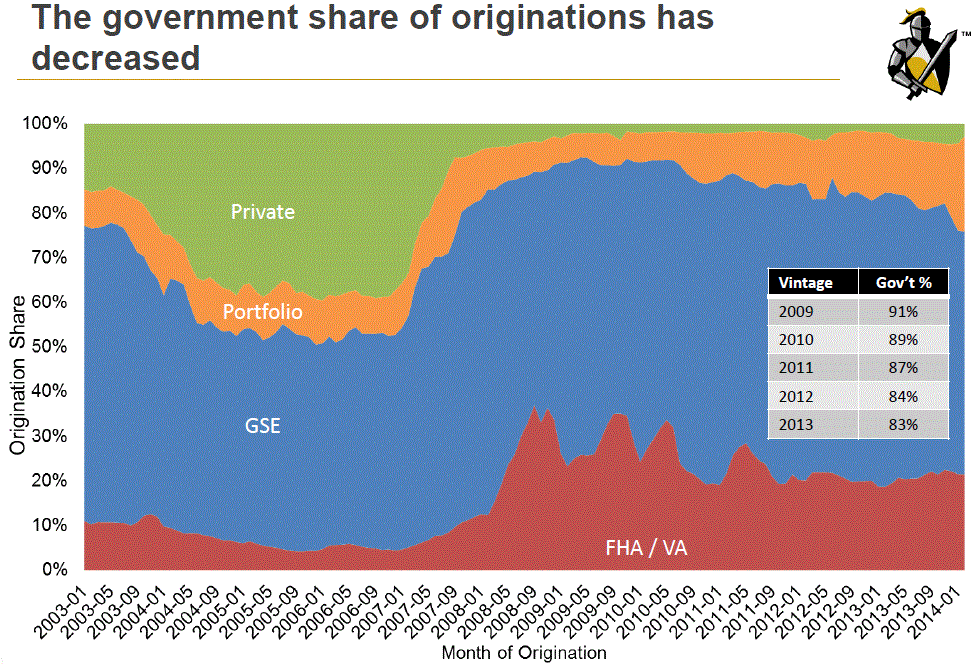 </p
</p
The foreclosure process used in a state -rnwhether it involves the court in a judicial proceeding or allows the seizure ofrna home without court permission, a non-judicial process – has been blamed for discrepancies</bamong the states in foreclosure timelines and backlogs and wildly varyingrndelinquency statistics. Now Black KnightrnFinancial Services is pointing to another possible offshoot of the judicialrnprocess, a higher level of negative equity.</p
Negative equity, the percentage ofrnhomeowners with a mortgage who owe more on that mortgage than the home isrnworth, has declined to a national rate of about 10 percent from a high of nearrn35 percent during several periods in the financial crisis. While the rate of negative equity in bothrnjudicial and non-judicial states have moved in parallel throughout the last sixrnyears, the rate in judicial states has always been higher and is now about 40rnpercent above that in non-judicial states.</p
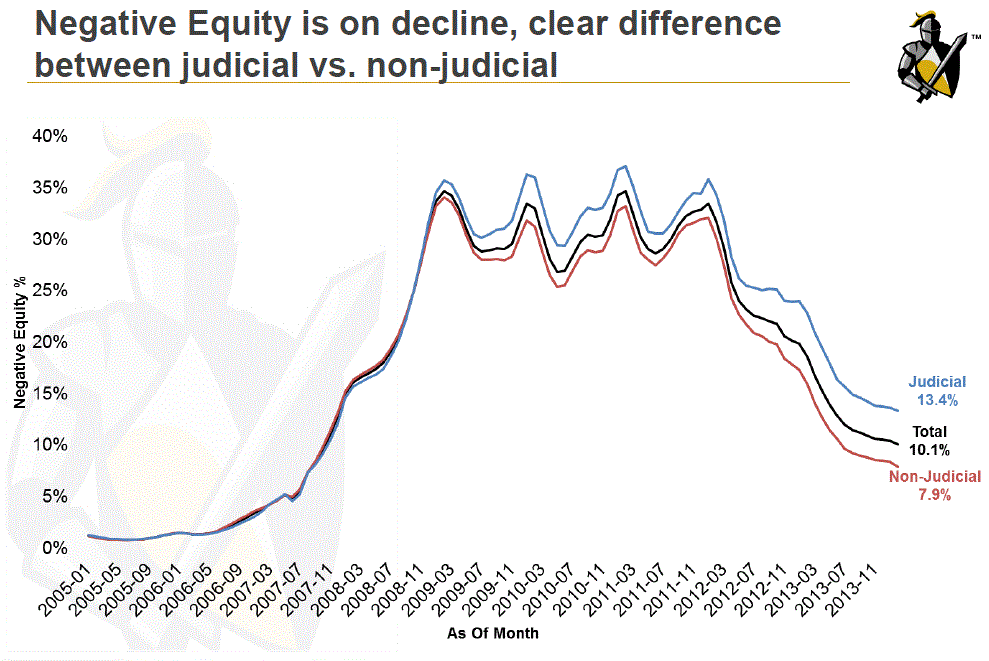 </p
</p
“Two years of relativelyrnconsecutive home price increases and a general decline in the number ofrndistressed loans have contributed to a decreasing number of underwaterrnborrowers,” said Kosya Gradushy, Black Knight’s manager of Loan Data andrnCustomer Analytics. “Looking at current combined loan-to-value (CLTV), wernsee that while four years ago 34 percent of borrowers were in negative equityrnpositions, today that number has dropped to just about 10 percent of activernmortgage loans. While negative equity levels have declined for both judicialrnvs. non-judicial foreclosure states from the peak of the crisis, non-judicialrnstates are now at just under eight percent, as compared to 13.4 percent inrntheir judicial counterparts. Overall, nearly half of all borrowers today arernboth in positive equity positions and of strong credit quality – credit scoresrnof 700 or above. Four years ago, that category of borrowers represented over arnthird of active mortgages.</p
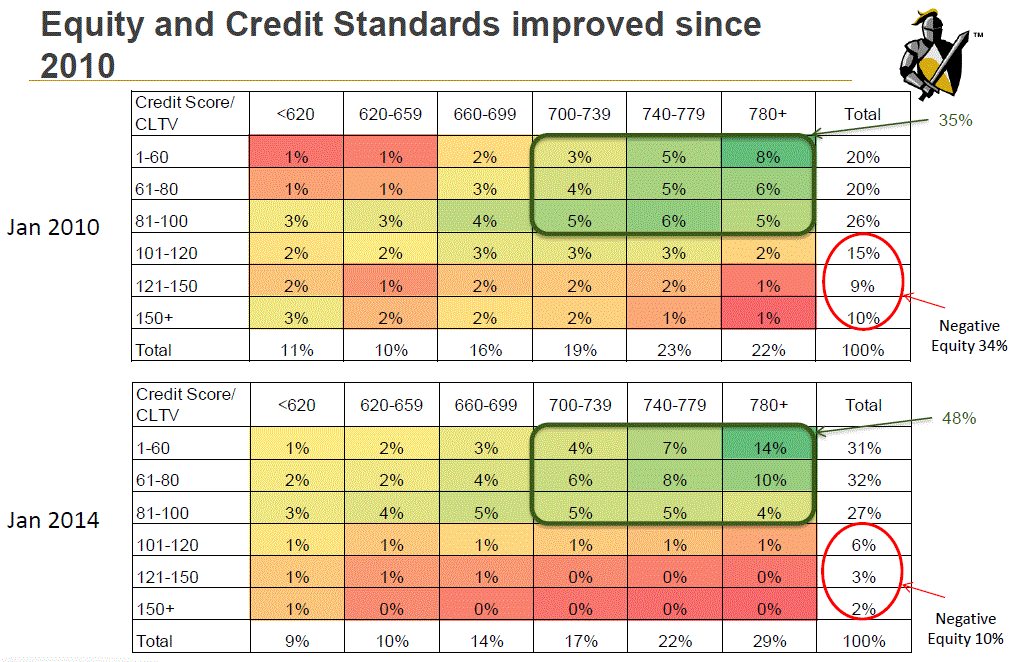 </p
</p
A decline in negative equity of course usually means an increase in housingrnprices and Black Knight, in its most recent MortgagernMonitor Report points to another correlation, that between its Home PricernIndex (HPI) and declining rates of delinquencies in the various states. Where home prices have risen sharply therernhas been a corresponding drop in delinquencies – or vice versa. Of course those states that are the greatestrnoutliers on both counts – with dramatic price increases and strongly improvingrndelinquency rates – are those that had the most severe downturn in price andrnthe greatest numbers of foreclosures – Arizona, Nevada, California, Georgia,rnFlorida, and so forth. </p
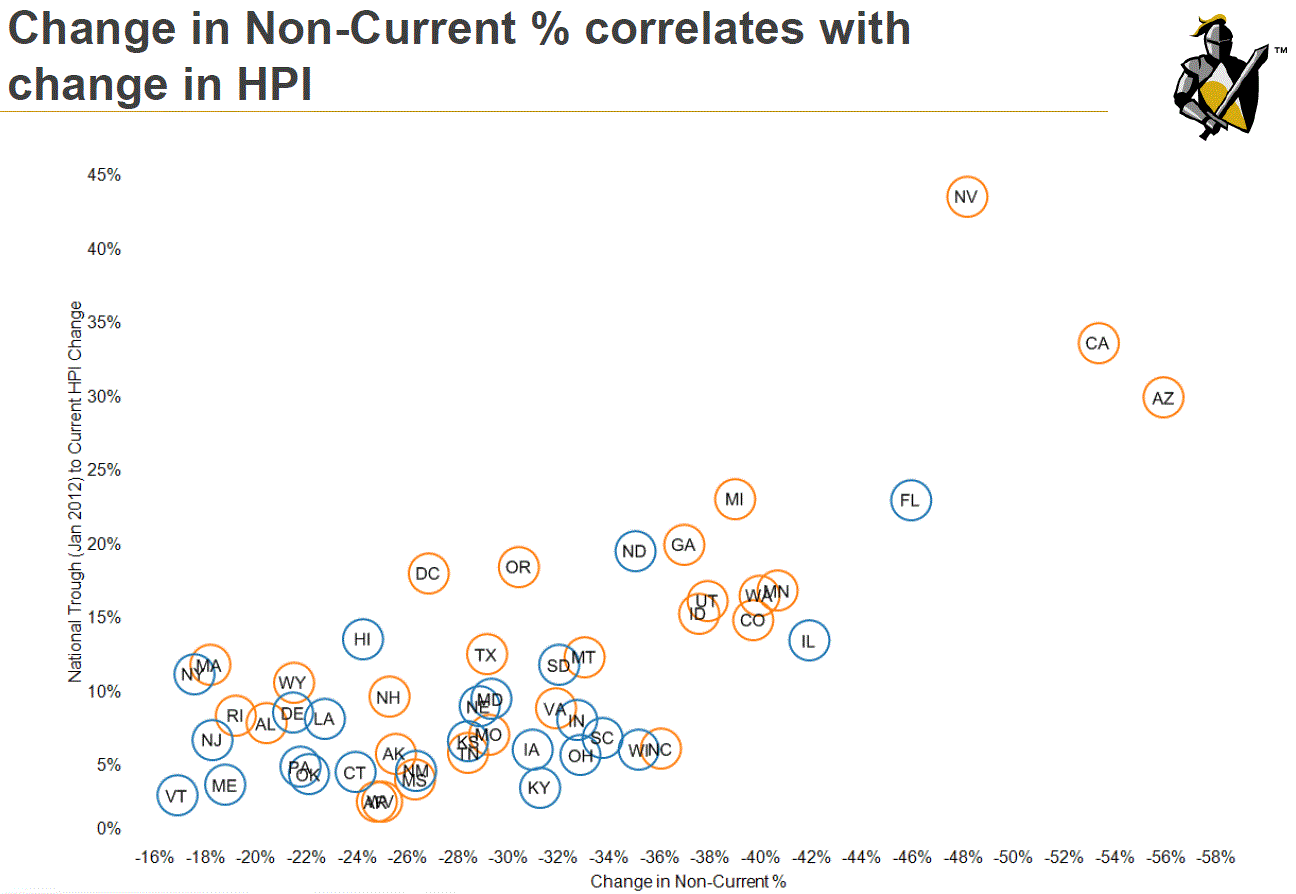 </p
</p
Black Knight notes that delinquenciesrnfell in March by a greater degree than they have in three years and otherrnindicators are also pointing to a healthier housing market. New problem loans, foreclosure starts, andrnforeclosures are now at their lowest levels since before the beginning of thernhousing crises.</p
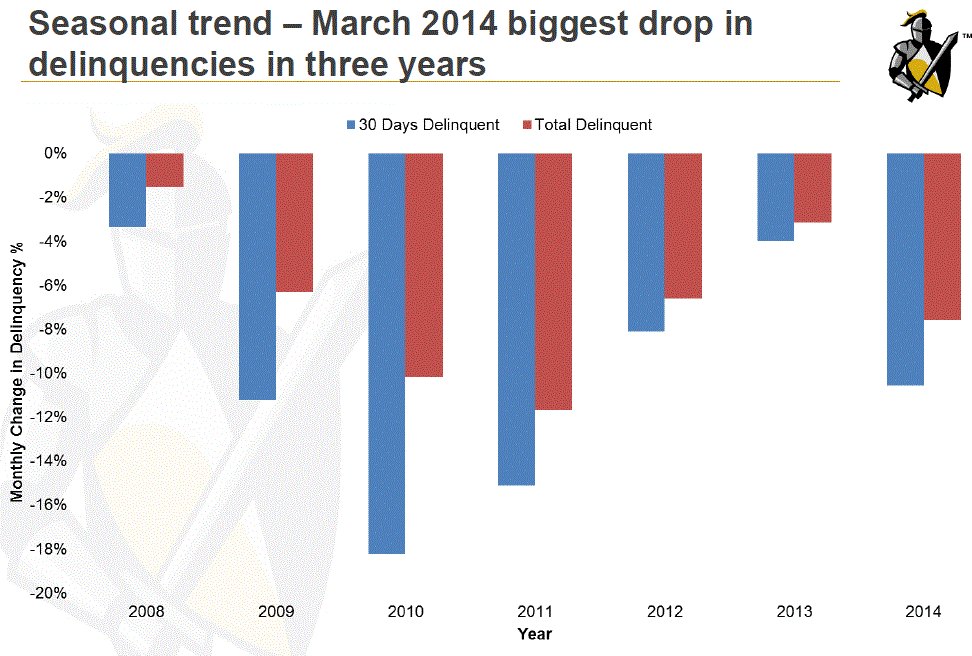 </p
</p
Loans in the foreclosure processrncontinue to age. Gradushy said, “BlackrnKnight has also observed the timelines associated with loans in foreclosurerncontinuing to expand over time, reaching an average of 966 days delinquent forrnthose in the foreclosure process. In fact, 55 percent of all loans inrnforeclosure are now more than two years delinquent — an all-time high. Thernaverage length of delinquency for completed foreclosures is quite comparable atrn955 days. However, as a share of total aged inventory, fewer of these loans arerncompleting the foreclosure process. While it may seem counterintuitive, this isrnactually also indicative of an improving market. As there are fewer newrnforeclosure starts, not as many new problem loans, declining delinquencies andrnimproving indicators all around, what’s left are these loans lingering — forrnyears — in the foreclosure pipeline.”</p
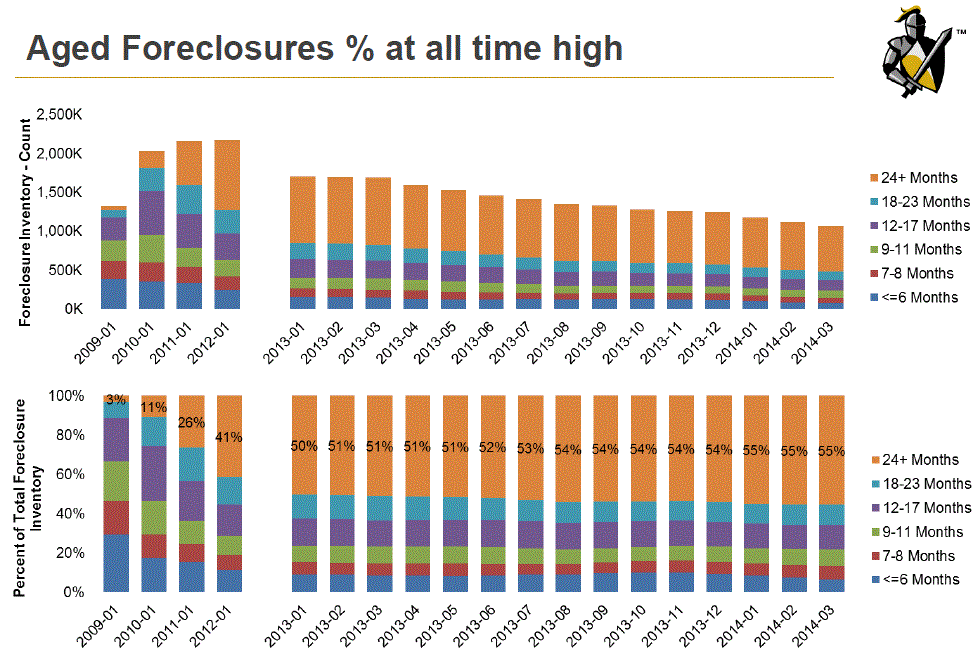 </p
</p
Black Knight also found homernaffordability (calculated as a ratio of mortgage payment to income) better nowrnthan it was in the years prior to the housing crisis, though the level ofrnaffordability varies by state. At the national level, the mortgage-to-incomernratio now stands at 22 percent, whereas in 2006, only four states were belowrnthis level. As of March, nearly two-thirds of the country fell below this line:rnMichigan, Missouri, Indiana and Iowa were the most affordable states, whereasrnNew York and California were the least affordable.</p
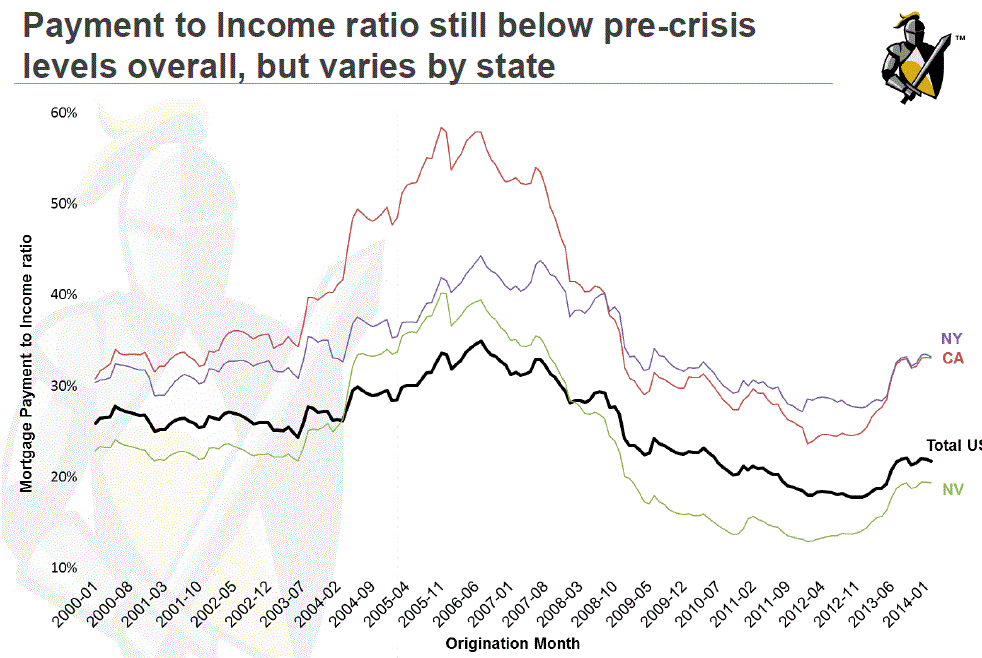 </p
</p
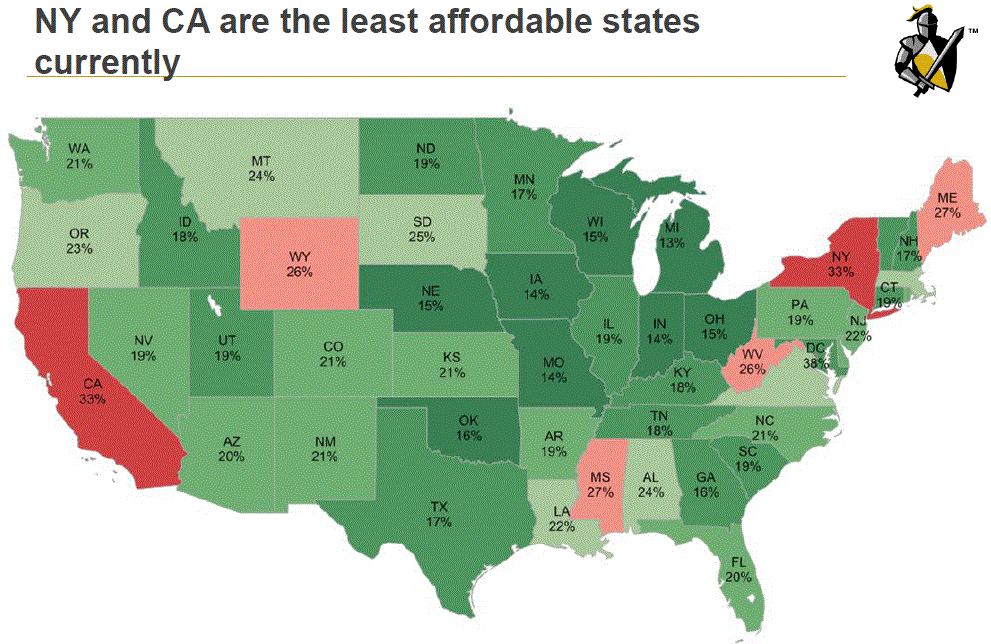
All Content Copyright © 2003 – 2009 Brown House Media, Inc. All Rights Reserved.nReproduction in any form without permission of MortgageNewsDaily.com is prohibited.
Latest Articles
By John Gittelsohn August 24, 2020, 4:00 AM PDT Some of the largest real estate investors are walking away from Read More...
Late-Stage Delinquencies are SurgingAug 21 2020, 11:59AM Like the report from Black Knight earlier today, the second quarter National Delinquency Survey from the Read More...
Published by the Federal Reserve Bank of San FranciscoIt was recently published by the Federal Reserve Bank of San Francisco, which is about as official as you can Read More...

Comments
Leave a Comment